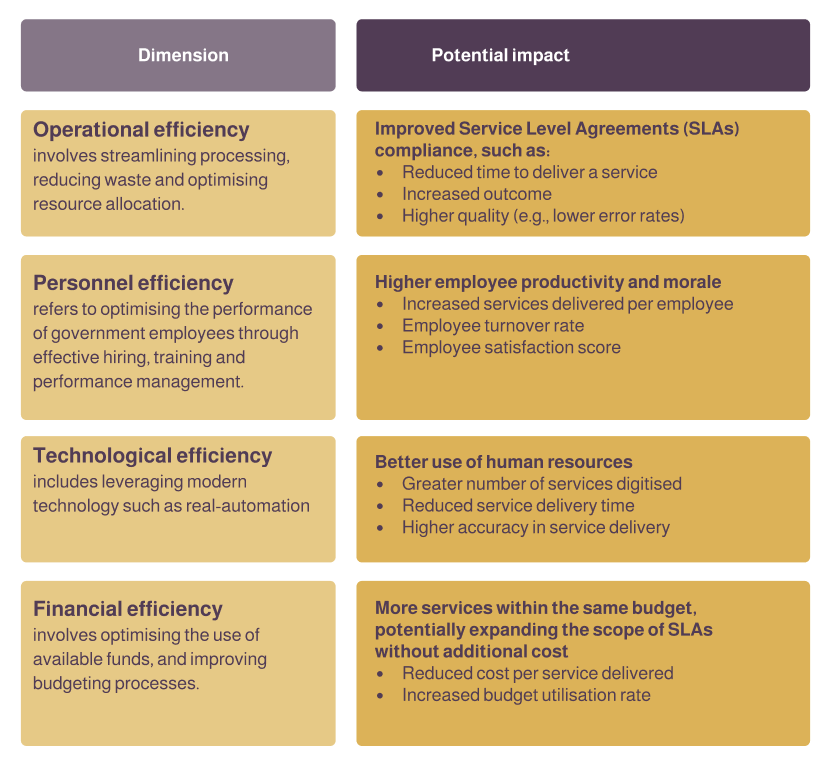Efficiency
Understand efficiency goals, impact and dimensions
EFFICIENCY GOALS AND IMPACT
Because efficiency represents the maximisation of output, quality, and responsiveness of services, given a set amount of resources, typical efficiency goals are around:
Streamlining workflows, reducing redundancies and eliminating inefficiencies.
Maximising outcomes or outputs with minimum inputs, or at a minimum cost.
Managing time effectively, prioritising and eliminating time consuming or unnecessary steps.
In driving for efficiency, one key aspect is typically to meet or exceed Service Level Agreements (SLAs) in the most cost effective manner. Service Level Agreements (SLAs) are legally binding contracts signed between two parties, in which they agree on what services will be provided, how they will be measured and the resulting consequences. Having those agreements in place with internal and external partners ensures the adherence to appropriate service levels.
Efficiency impacts multiple aspects of a given customer experience such as:
Quantity
Service delivery throughput (e.g., number of calls answered).
Quality
Service delivery quality (e.g., caller satisfaction).
Cost
Cost per unit of output or outcome (e.g., cost per call answered).
Time
Speed of service delivery (e.g.,wait time).
Process
Effectiveness of underlying process(e.g., level of automation).
EFFICIENCY DIMENSIONS
There are multiple dimensions to consider when thinking through efficiency in government services:
